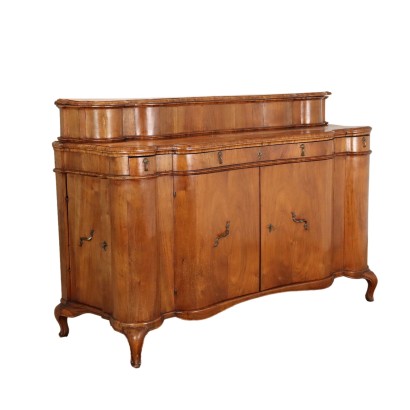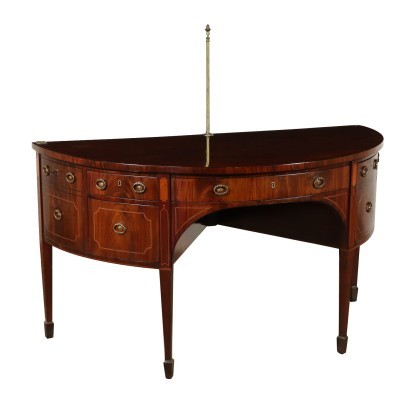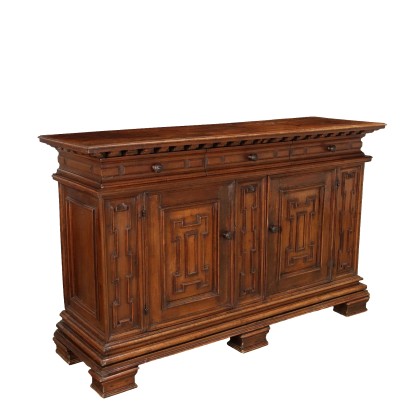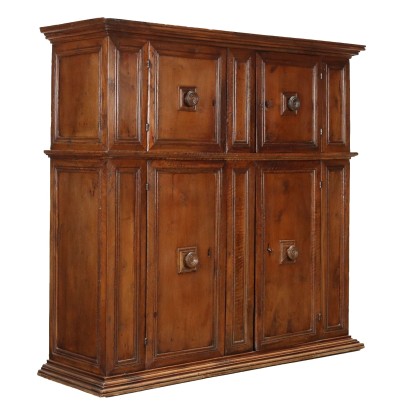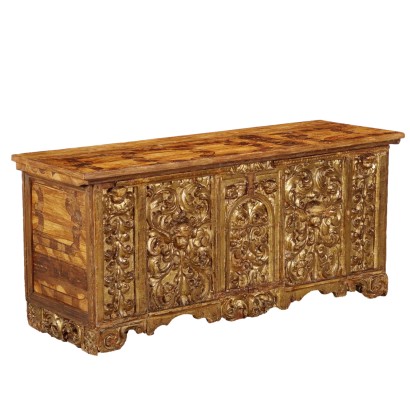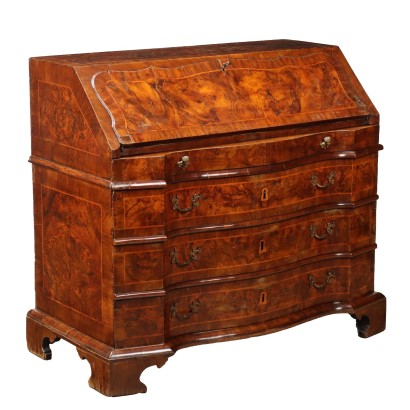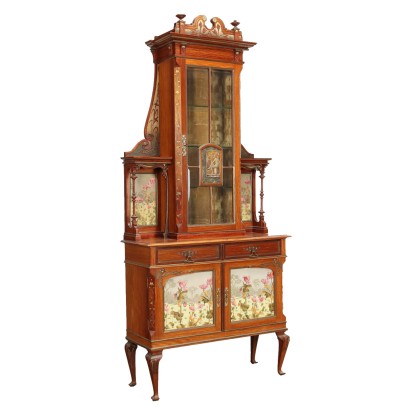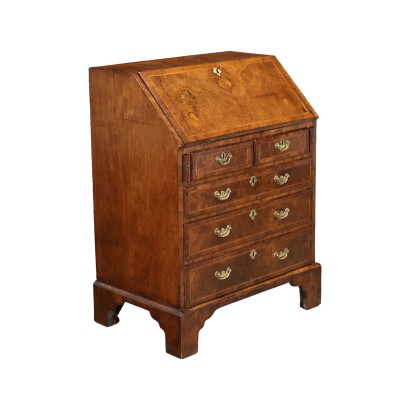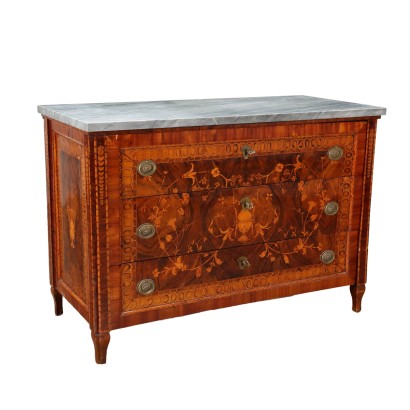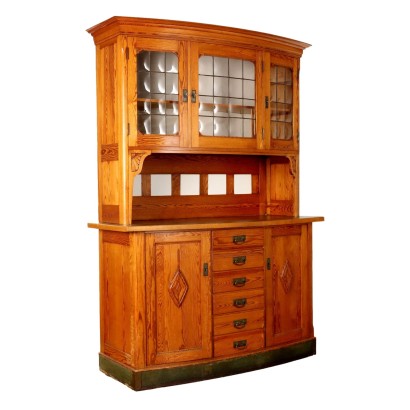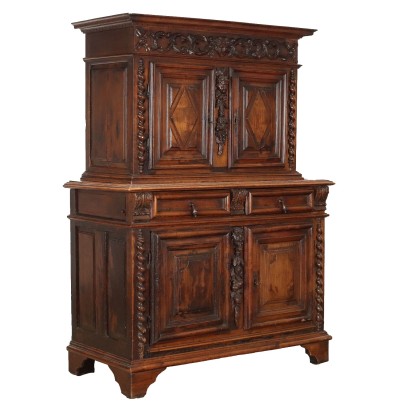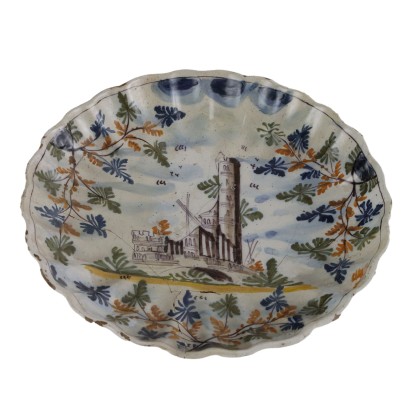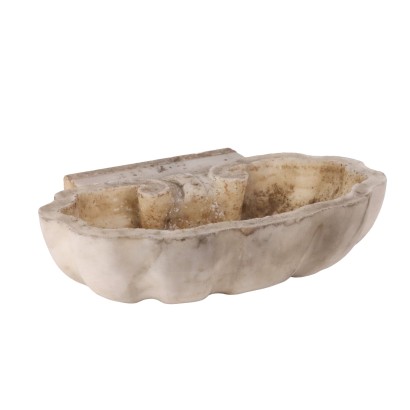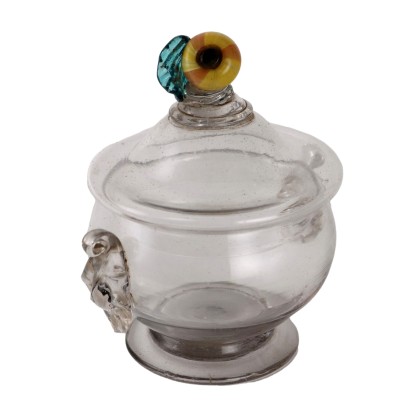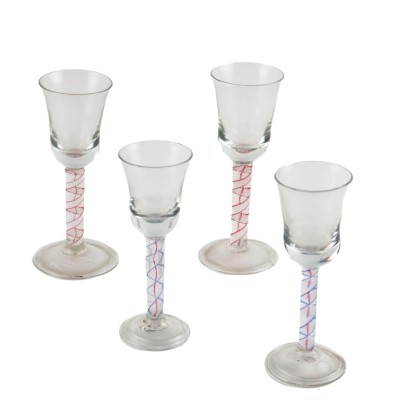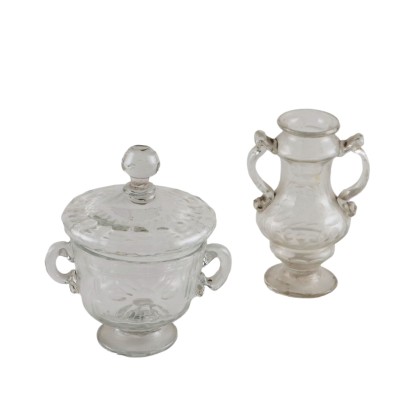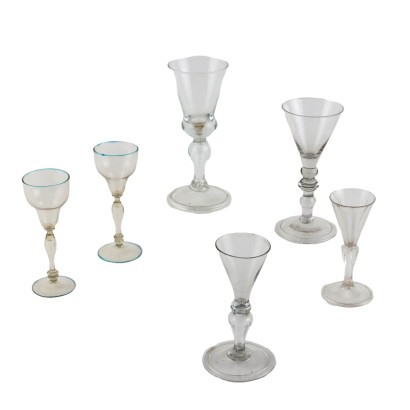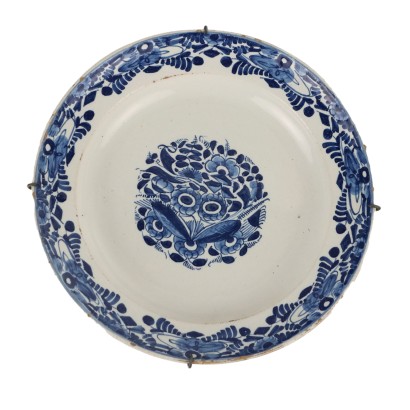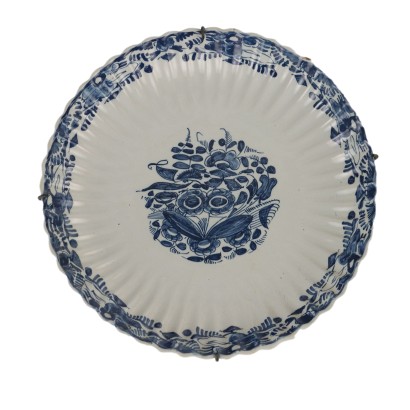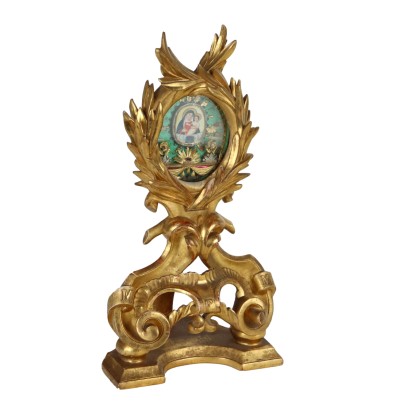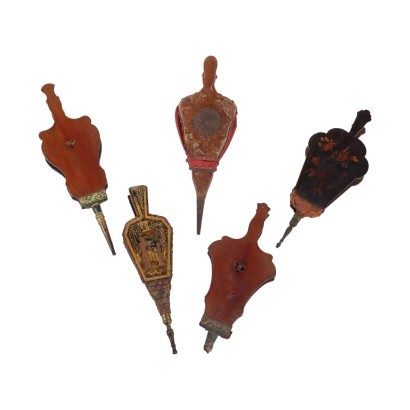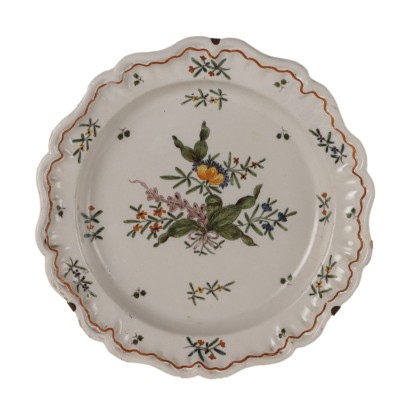Antique Baroque Cupboard Walnut Fir Ferrara Italy XVIII Century - Ferrara, Mid XVIII Century
Features
Ferrara, Mid XVIII Century
Style: Barocchetto (1720-1770)
Age: 18th Century / 1701 - 1800
Origin: Ferrara, Emilia Romagna, Italy
Main essence: Silver Fir , Walnut
Description
Baroque sideboard made in Ferrara supported by cabriole feet, has a wavy front in which there are pairs of doors and drawers in the band: a large central one and two smaller lateral ones; the sides are also wavy and are equipped with a door each. On the top rests a riser with a shelf that can be opened giving access to the internal compartment, to which galvanized tanks have been added to allow it to be used as a planter; in walnut, the interiors are in fir. The piece of furniture has small restorations and replacements in the construction part of the drawers, in the rear strip and in the hinges of the shelf to allow the aforementioned transformation, in the hardware and in a handle of one of the two side doors.
Product Condition:
Product which due to age and wear requires restoration and re-polishing. We try to present the real state of the furniture as completely as possible with photos. If some details are not clear from the photos, what is stated in the description applies.
Dimensions (cm):
Height: 129,5
Width: 200
Depth: 70
Additional Information
Style: Barocchetto (1720-1770)
With this term we designate, for what specifically relates to furniture, a part of the production carried out in Italy in the period of time between the Rococo era and the first phase of neoclassicism.It is characterized by the formal and decorative structure still rigidly adhering to the dictates dear to the Baroque period (hence the term baroque) and to the Louis XIV fashions and yet the new times are captured in the adoption of smaller volumes, more decorative modules. elegant, often directly inspired by French fashion, but always executed with rigorous principles of ornamental symmetry.
The tendency to assimilate formal and volumetric novelties but not to incorporate their ornamental elaboration finds natural explanation in Italy in the fact that in this century the great aristocracy experienced an unstoppable political and economic decline.
If in the previous century there was a great profusion of furnishings destined to adorn newly built homes, to proudly show the power of the client family, in the eighteenth century they rather take care to update the building with only the furniture strictly necessary for the new needs imposed by fashion or functional needs.
The old scenographic apparatus is maintained and the new must not contrast too much.
Find out more about the Barocchetto with our insights:
Classic Monday: discovering Barocchetto
Classic Monday: between Baroque and Barocchetto
Classic Monday elegant and unusual with two Barocchetto balustrades
FineArt: Pair of Barocchetto chairs, Venice
Emilian canterano first quarter XVIII century, first Barocchetto
Ribalta a urn, Milan mid-18th
Age: 18th Century / 1701 - 1800
18th Century / 1701 - 1800Main essence:
Silver Fir
Soft coniferous wood, used for rustic furniture or to build the chest, that is the structure, of furniture then veneered in more precious woods. It has been used since ancient times, its most valuable use is, in the Spruce variant, in the inlays of French antique furniture of the '700 . The spruce, more typical of northern Europe, in Italy grows mainly in the Eastern Alps at altitudes above 1300 m. The noblest use of this essence was in the construction of violins, guitars and cellos: Stradivari himself produced his famous violins with this wood.Walnut
Walnut wood comes from the plant whose botanical name is juglans regia , probably originally from the East but very common in Europe. Light or dark brown in color, it is a hard wood with a beautiful grain, widely used in antique furniture. It was the main essence in Italy throughout the Renaissance and later had a good diffusion in Europe, especially in England, until the advent of mahogany. It was used for solid wood furniture and sometimes carvings and inlays, its only big limitation is that it suffers a lot from woodworm. In France it was widely used more than anything else in the provinces. In the second half of the eighteenth century its use decreased significantly because mahogany and other exotic woods were preferred.Other customers have searched:
Credenza, mobile da cucina, armadio, stipo, dispensa, madia..
Ecco qualche spunto dal nostro blog e da FineArt per scoprire di più sul tema credenze:
Leggi di più
Una credenza che dialoga con il passato
Credenza doppio corpo, tesoro di intagli e decorazioni
Piccolo stipo, grande arredo
Stipo toscano a cavallo tra XVI e XVII
Credenza Barium di Luciano Frigerio
Credenza, Mathieu Befort Jeune, Parigi, terzo quarto XIX secolo
Mobile anni '60
Highboard '503' Gianfranco Frattini per Bernini
Mobile bar anni '40
Mobile Bar anni '40 '50, manifattura italiana
Sull'antiquariato in generale dai un'occhiata anche a:
Classic Monday: da un pezzo dei nostri magazzini alla storia dell'antiquariato
L'antiquariato dalla A alla Z: il Dizionario dell'Antiquariato
Il dizionario dell'antiquariato - Lastronatura
Il dizionario dell'antiquariato - Mascherone
Il dizionario dell'antiquariato - Natura morta
Il dizionario dell'antiquariato - Opificio
Il dizionario dell'antiquariato - Pastiglia
Il dizionario dell'antiquariato - Savonarola
Il dizionario dell'antiquariato - Rosone
Leggi di più
Una credenza che dialoga con il passatoCredenza doppio corpo, tesoro di intagli e decorazioni
Piccolo stipo, grande arredo
Stipo toscano a cavallo tra XVI e XVII
Credenza Barium di Luciano Frigerio
Credenza, Mathieu Befort Jeune, Parigi, terzo quarto XIX secolo
Mobile anni '60
Highboard '503' Gianfranco Frattini per Bernini
Mobile bar anni '40
Mobile Bar anni '40 '50, manifattura italiana
Sull'antiquariato in generale dai un'occhiata anche a:
Classic Monday: da un pezzo dei nostri magazzini alla storia dell'antiquariato
L'antiquariato dalla A alla Z: il Dizionario dell'Antiquariato
Il dizionario dell'antiquariato - Lastronatura
Il dizionario dell'antiquariato - Mascherone
Il dizionario dell'antiquariato - Natura morta
Il dizionario dell'antiquariato - Opificio
Il dizionario dell'antiquariato - Pastiglia
Il dizionario dell'antiquariato - Savonarola
Il dizionario dell'antiquariato - Rosone
Product availability
The product can be seen at Cambiago
Disponibilità immediata
Pronto per la consegna in 2 giorni lavorativi dalla conferma dell'ordine del prodotto.
Consegna tra i 7 e i 15 giorni in tutta Italia. Per le isole e le zone difficilmente raggiungibili i tempi di consegna possono variare.



